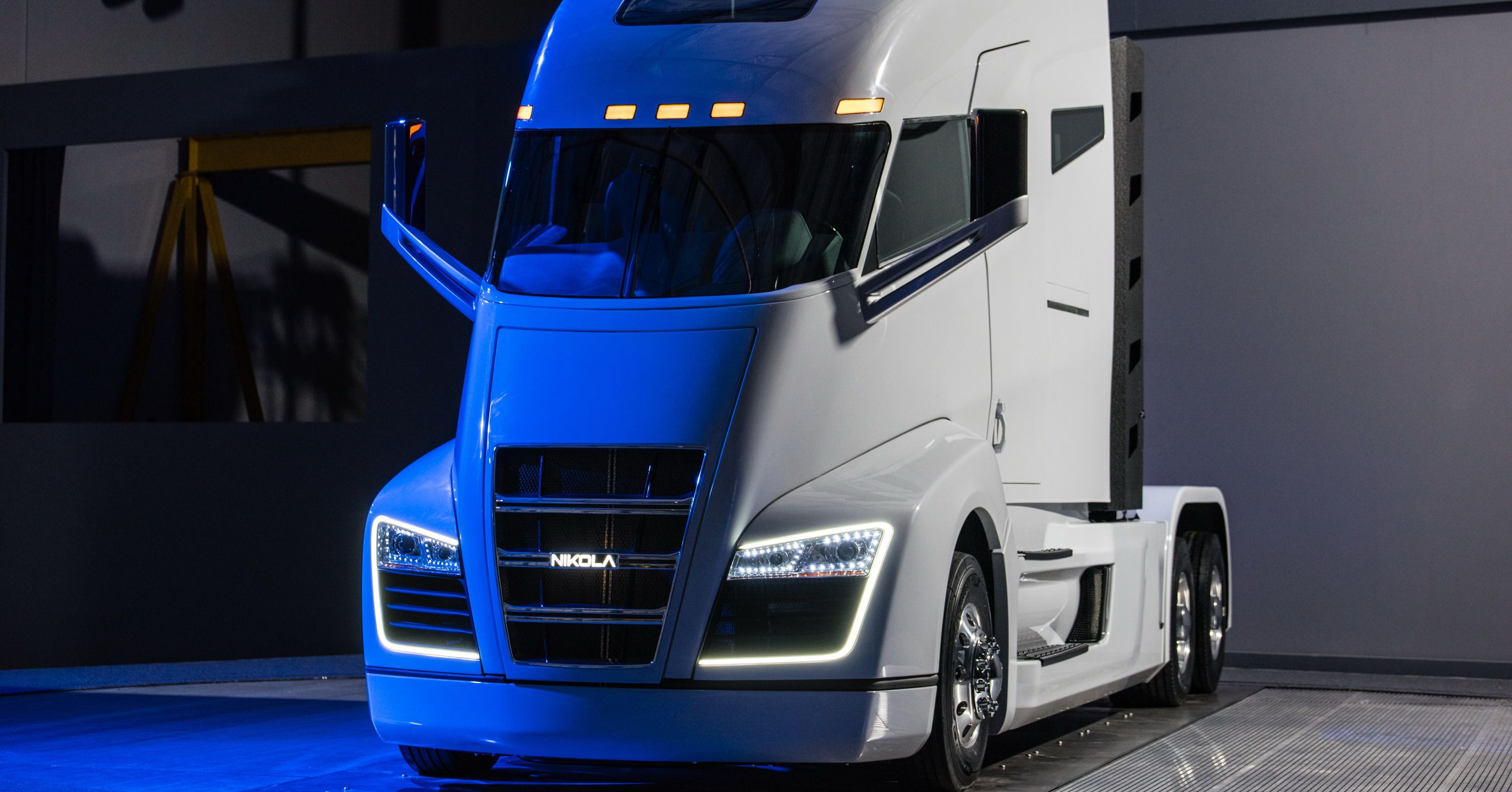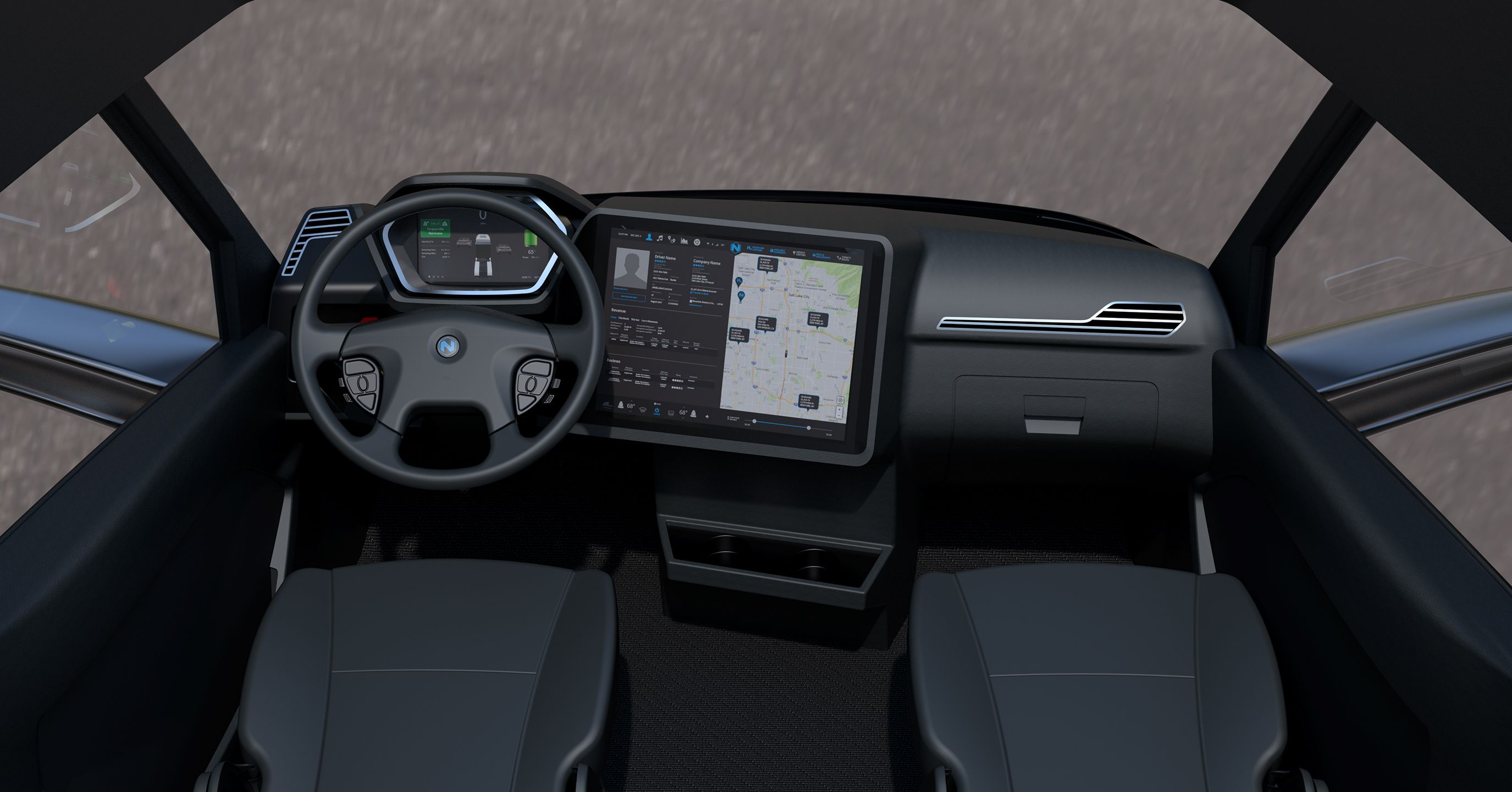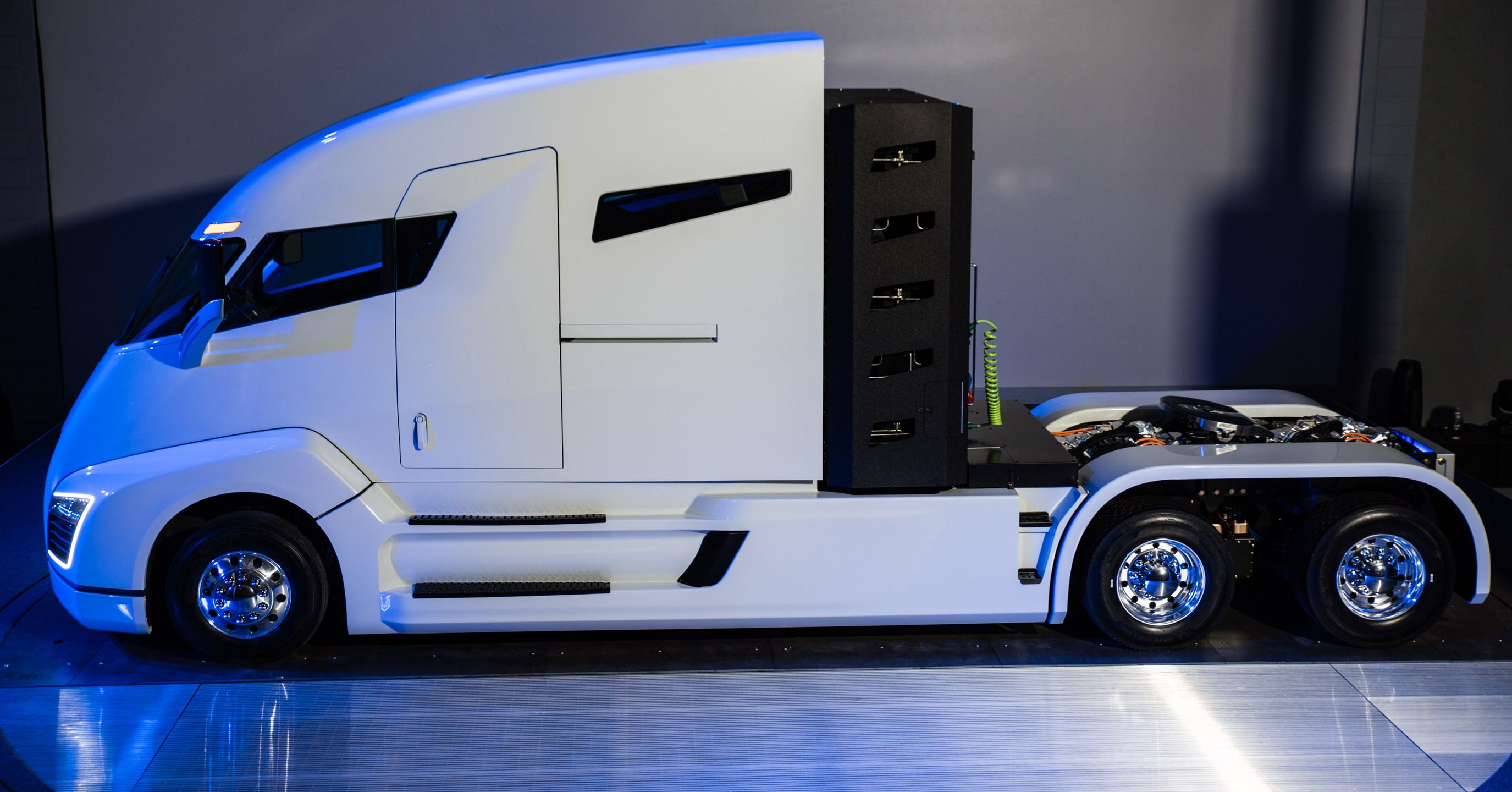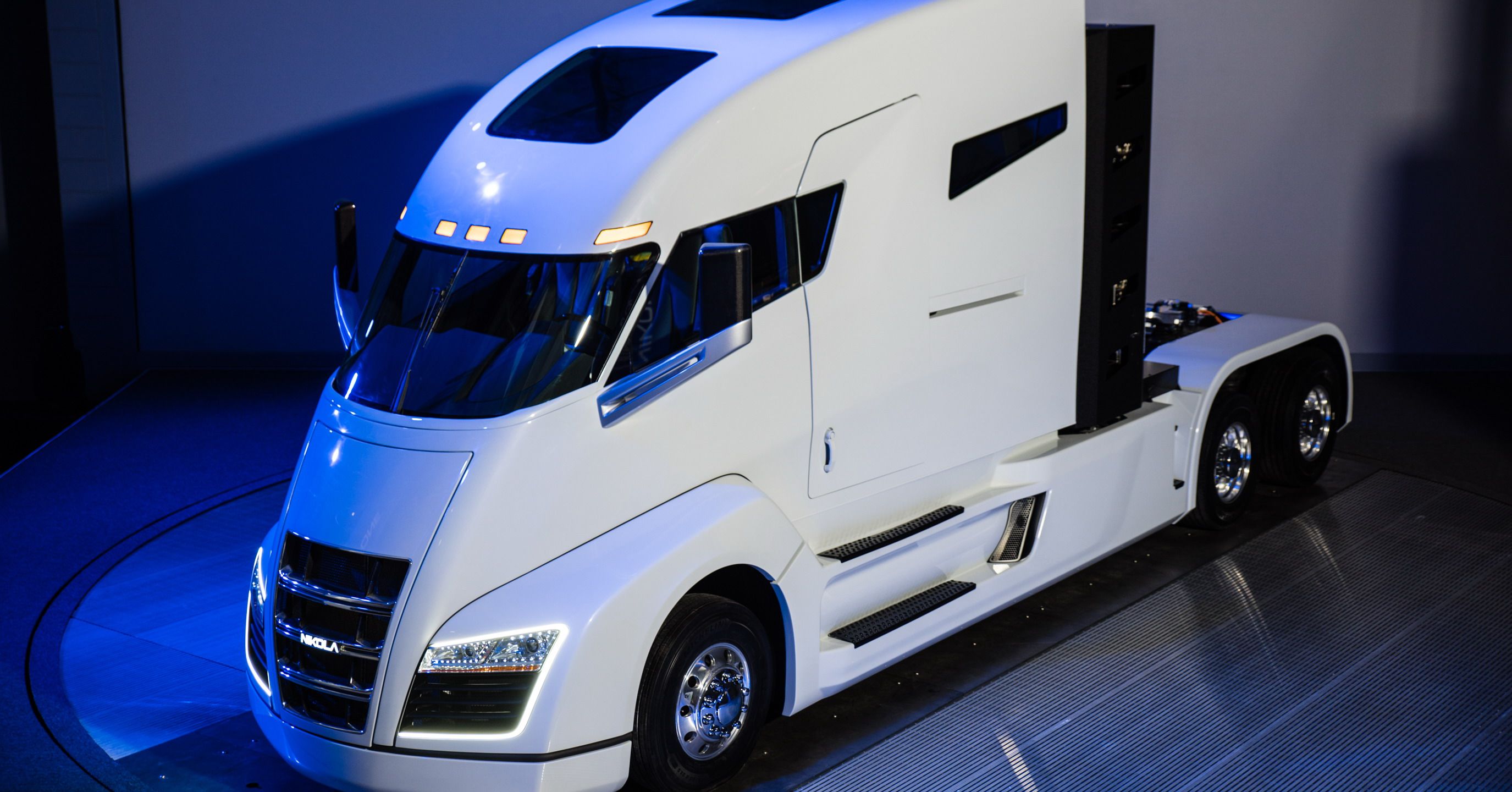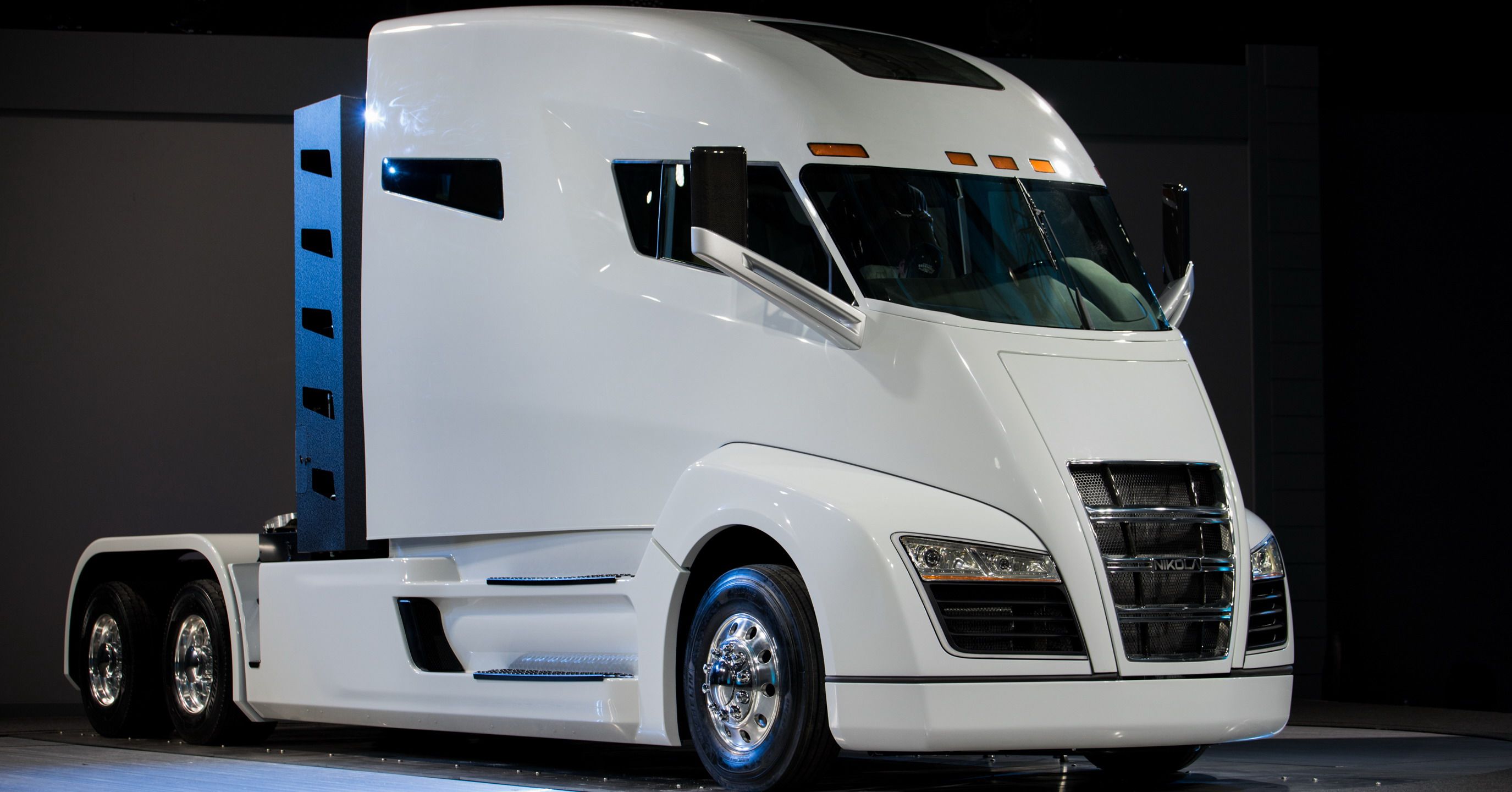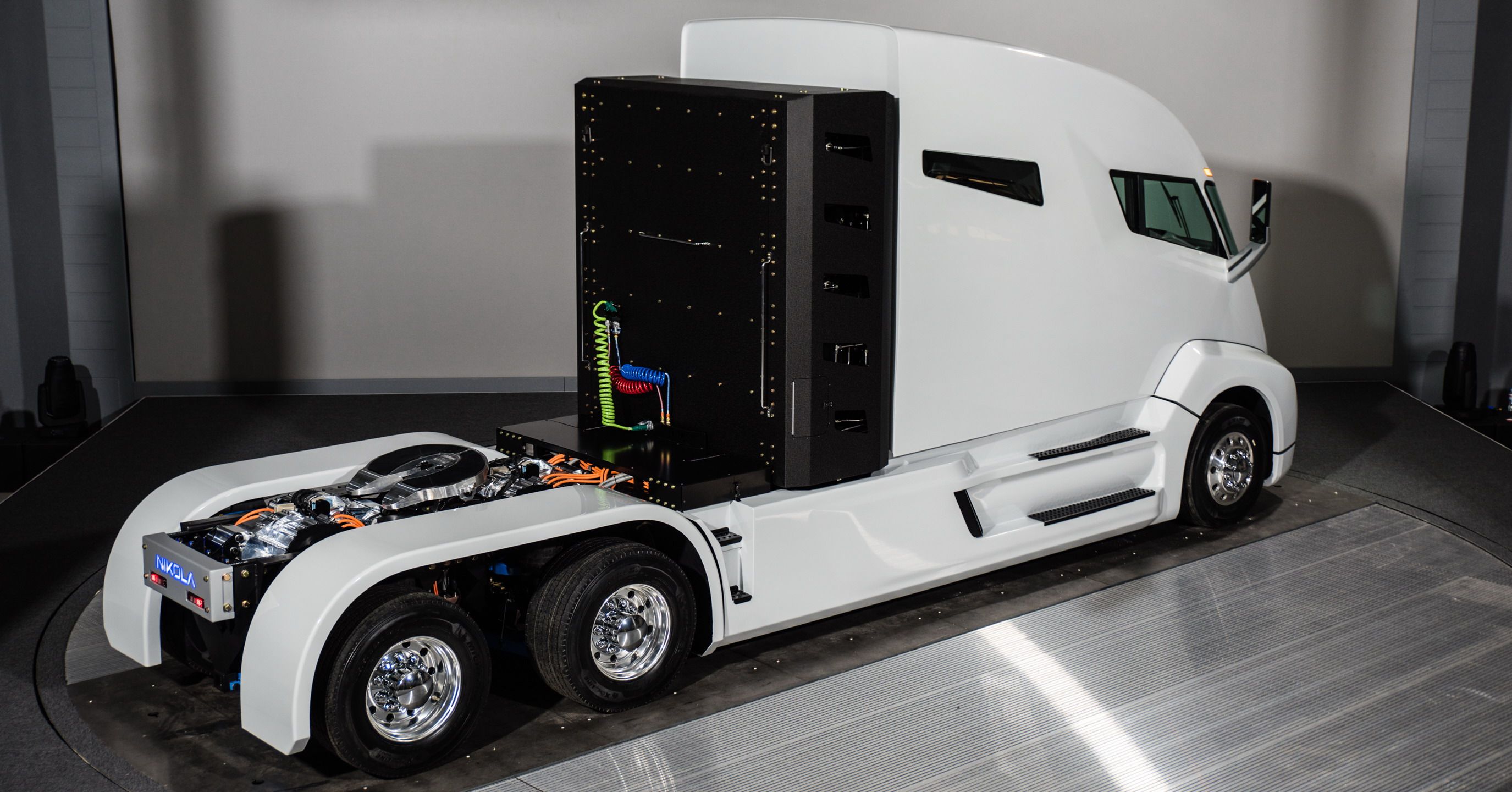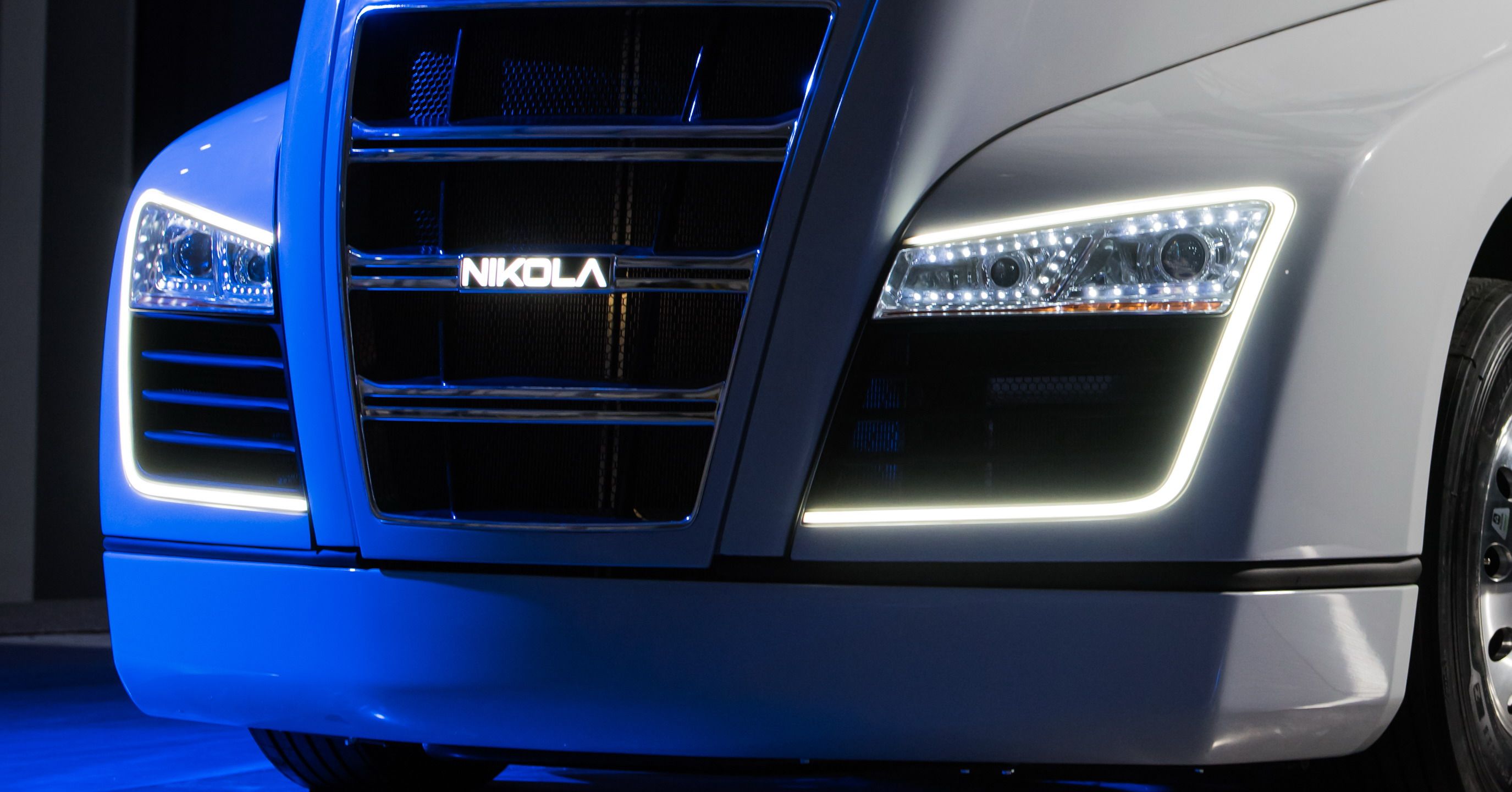Nikola Motors has been in the news lately over its innovative yet seemingly troubled turbine hybrid electric turned hydrogen electric Class 8 semi truck concept. Well, the startup automaker has defied naysayers by actually producing a working prototype and meeting its December 2, 2016 debut deadline. Company founder and CEO Trevor Milton hosted the debut event near downtown Salt Lake City, Utah to a crowd of people from around the globe.
If you recall, the Nikola One was initially designed to be a fully electric truck with a “fuel agnostic” turbine engine acting as a range extender. Only a few months after the Nikola’s announcement of the semi truck in May 2016, the company shifted gears, concentrating on a custom-built hydrogen fuel cell-powered range extender. The change in plans planted seeds of doubt in hopeful onlookers, but Nikola Motors has seemingly made the truck a reality.
The truck is said to be 100-percent zero emissions with an 800 to 1,200-mile cruising range when fully loaded with 65,000 pounds thanks to its 320 kWh battery that generates 2,000 horsepower and 1,000 pound-feet of torque via six electric-drive motors. Nikola Motors is backing its truck with a million miles of free hydrogen fuel. Part of Nikola Motors’ business model is building a network of hydrogen stations. The initial phase has 56 stations planned, with the eventual number growing to 364 across the U.S. and south Canada. Construction is set to begin in January 2018 with an opening date in late 2019. Non-Nikola owners will be able to avail themselves of the hydrogen, but at a cost of $3.50 per kilogram.
The Nikola One is still in the development stage, but production is set to begin in 2019, with units hitting the road in 2020. The truck will be built by a third party manufacturer and will be serviced by Ryder, a current giant in the trucking industry.
CEO Trevor Milton shared a barrage of information at the One’s debut. We’ve compiled the high points in our review below, so keep reading for more. You can also watch the entire 42-minute keynote speech.
Continue reading for more information.
2020 Nikola One
- Make: Array
- Model: 2020 Nikola One
- Horsepower: 1000
- Torque: 2000
- [do not use] Vehicle Model: Array
Keynote Speech
Exterior
While the Nikola One is undeniably a Class 8 semi truck, its details are certainly unlike anything currently on the road. That’s thanks to its hydrogen/battery powertrain in place of the standard diesel engine. The One replaces the conventional long hood of a semi truck with a steeply sloped hood that promotes good visibility for the driver. The windshield wraps around the cab with only thin A-pillars separating it from the large side windows. The truck also boasts a 360-degree camera system.
The cab itself is constructed primarily from carbon fiber, including the hood and bumper. This helps cut weight while adding strength. The frame rails are even lighter than standard semi frames. The One’s frame is constructed from steel and aluminum. In general, the One is said to be roughly 2,000 pounds lighter than an equivalent diesel-powered semi.
Entering the truck is different, too. Rather than a conventional door at the driver and passenger seats, the One has a single door positioned behind the drivers seat. The tall entry way allows even the tallest of drivers the ability to walk upright into the truck.
Aesthetically, the One has a front clip that’s never been seen before on a big rig. Its low-slung bumper hugs the road while a massive grille holds radiators for powertrain cooling. LED-encrusted headlights feature an interesting halo ring that acts as daytime running lights. The Nikola will be unmistakable in your rear-view mirror.
Around back, fenders cover the twin rear axles, helping with aerodynamics. Steps lead onto the rear platform where the air hoses and power cables connect to a trailer. The hydrogen powertrain components are housed in the large back box behind the sleeper cab. The battery pack is located below the sleeper cab, mounted between the frame rails. As a whole, the Nikola One has a striking design that looks rather promising.
Nikola Two – the Day Cab
Part of Nikola Motors’ future plans includes the Nikola Two – a shorter, less expensive semi that still features the One’s powertrain, but is paired with a day cab design. This truck is designed for local deliveries or short-run transport. The Two has a more conventional shape, but still caries Nikola’s design language, including the LED headlights, large grille, long side running boards, and integrated rear fenders. Of course, the black box at the rear of the cab is present to hold the hydrogen fuel cell components.
Interior
Because of the One’s unique cab design, the interior benefits from roughly 30 percent more interior space than a standard sleeper cab semi. The tall roof and low floor allow for upright walking, while two full-size beds allow for tag-team driving. The interior also features a slew of modern convinces like a full-size fridge and freezer, a large closet, a microwave, computer desk, a 40-inch curved LED 4K TV with integrated Apple TV, and several 12-volt and 110-volt outlets scattered around. And, because all the power comes from the batteries, the driver can “idle” anywhere without incurring issues from anti-idle laws meant to keep diesel emissions in check.
Behind the wheel, the driver has use of two main screens. The first is a 10-inch screen that acts as the gauge cluster, showing vital information like the speedometer, battery level, odometer, trip odometer, coolant temperature, volt meter, hour meter, service indicator, clock, distance to empty, fuel gauge, high-temperature light, and a seatbelt reminder light. The second is the massive 21-inch infotainment display that houses navigation, music, HVAC controls, and Nikola Motors’ proprietary route and load planning, cloud-based system. The truck also has Wi-Fi and 4G LTE connectivity. It uses these systems to update its software over-the-air, just like the Tesla models.
Drivetrain
Of course the big news is the drivetrain. The Nikola One uses a large 320 kWh lithium ion battery pack that powers six, 800-volt AC motors. A hydrogen fuel cell acts as a range extender, recharging the batteries when their levels become low. The system provides an impressive 1,000 horsepower and 2,000 pound-feet of torque, allowing the One to move rather quickly for a vehicle its size.
In fact, Nikola says the One will hit 60 mph in 30 seconds with a full load – half the time needed for a conventional semi truck. The One is also supposed to handle a six-percent grade with a full load while maintaining 65 mph. Even the most powerful turbodiesel trucks will lose 15 to 20 mph on hill that steep.
The motors also act as bakes, pulling power from the wheels as regenerative braking. This eliminates the old-school Jake Brake noise common with diesel engines, while also preserving the life of the air brakes by a wide margin. Nikola even says the disc brakes are designed to last 500,000 miles before service. Aside from those benefits, the One is said to have a reduced braking distance of more than 30 feet.
As for fuel economy, Nikola says the One gets an equivalent of 15.4 mpg with its largest battery and hydrogen tank option. That might not sound very efficient, but it’s double what most diesel trucks get while under load.
What’s more, because each of the six wheels has its own electric motor, the One’s computer can vector torque output specifically to each wheel, giving it better traction in slippery conditions and around turns. The One’s stability is further enhanced thanks to its low center of gravity. That’s not the case with diesel trucks. An average six-cylinder turbodiesel in a Class 8 truck weights around 4,000 to 5,000 pounds.
Adding to the list of firsts, the Nikola One features and independent suspension system at each wheel. Most semi trucks have a solid bar-style axle up front with solid drive axles in the rear positions. Massive leaf springs hold these in place, giving the truck a rough ride. The One’s suspension is said to be smoother and more compliant while still providing full load capacity.
When it comes time to refuel, One drivers will find one of 56-plus Nikola filling stations in the U.S. and fill the hydrogen tank. The process will take 10 to 15 minutes and is free for the first million miles. Best of all, there is no engine oil to change, transmission fluid to swap, or other typical repairs that create downtime.
|
Motor Type |
800V AC Motors |
|
Battery Capacity |
320kWh Lithium Ion |
|
Transmission |
Direct Drive With Low-Noise Gears |
|
Drive System Type |
6X4 Four-Wheel Drive |
|
Transmission |
Two Speed Automate |
|
Horsepower |
1,000 HP |
|
Torque |
2,000 LB-FT |
|
Range |
1,200 miles |
|
Top Speed Up Hills (6%) |
65 MPH |
|
On Descent |
Recharging & Saving Brakes |
|
Acceleration 0-60 MPH Under Load |
30 seconds |
|
MPG |
10 - 20 MPG |
|
Weight |
18,000 - 21,000 lbs |
Price
Nikola Motors says it will begin leasing the One to early adopters for around $5,000 per month. That is more expensive than a conventional truck, but Nikola foots the bill for fuel for the first million miles, along with all the maintenance costs. Outright purchases of the One will come later and is expected to range between $300,000 and $400,000.
For now, Nikola is taking orders with a refundable $1,500 deposit. Should you want to back out of the purchase at any time, the deposit is returned. Impressively, Nikola says it already has $2.5 billion in pre-ordered trucks, however, that accounts for the entire cost of the One, not just the $1,500 deposit.
According to Nikola’s math on its webpage, the One has a lower operating cost of about half that of a standard semi truck, though it needs to be driven twice the mileage. Nikola is accounting for a 500,000-mile lifespan on a conventional, diesel-powered truck. While that’s on the short side of what modern semi trucks are commonly reaching these days, the One is fully expected to last a million miles. Time will tell whether this forecast holds true.
Conclusion
The Nikola One and its inner-city brother, the Nikola Two, seem to be interesting, innovative products from an ambitious startup manufacturer. CEO Trevor Milton seems to have things under control and moving in a positive direction now that the prototype One has been officially seen by the public. It will definitely be interesting to see how Nikola moves the One from prototype to production while simultaneously building a nationwide infrastructure of hydrogen refueling stations.
Perhaps an automaker like Toyota or Honda will get behind the building project. After all, both automakers currently have fuel cell vehicles with a very limited number of refueling stations clumped together in south California and around New York City. If that were to happen, hydrogen fuel cell vehicles might have an improved chance to succeeding on a mass scale – something just not possible with today’s infrastructure.
Everything aside, it seems Nikola is on the right track and has a solid backing from investors like U.S. Express. Let us know what you think in the comments below.

